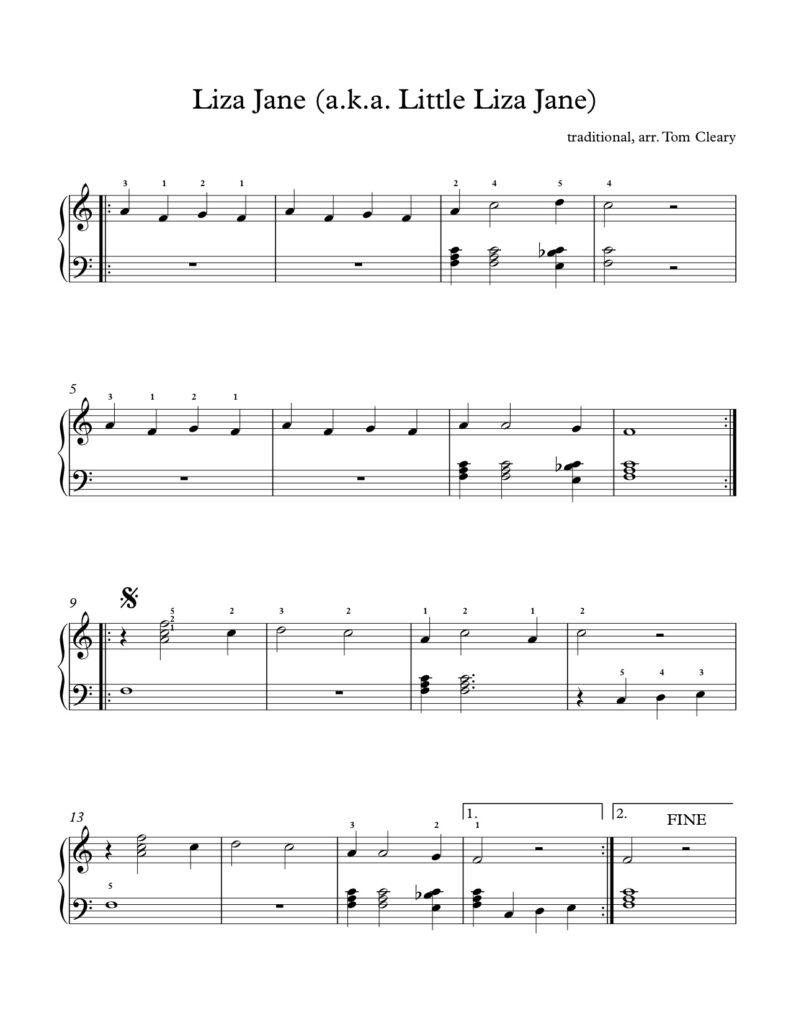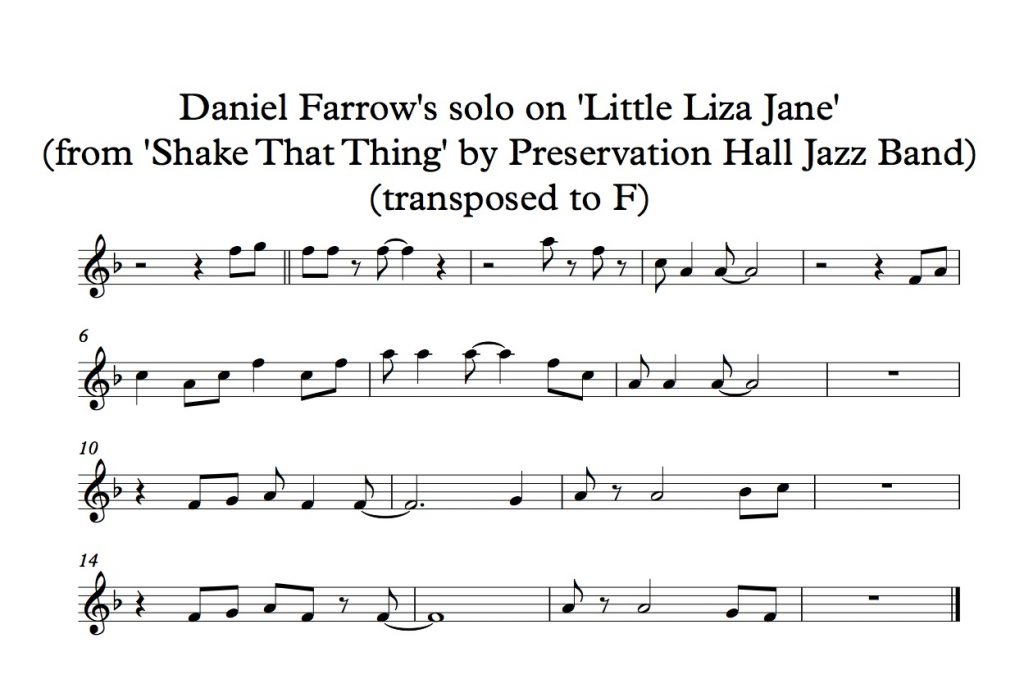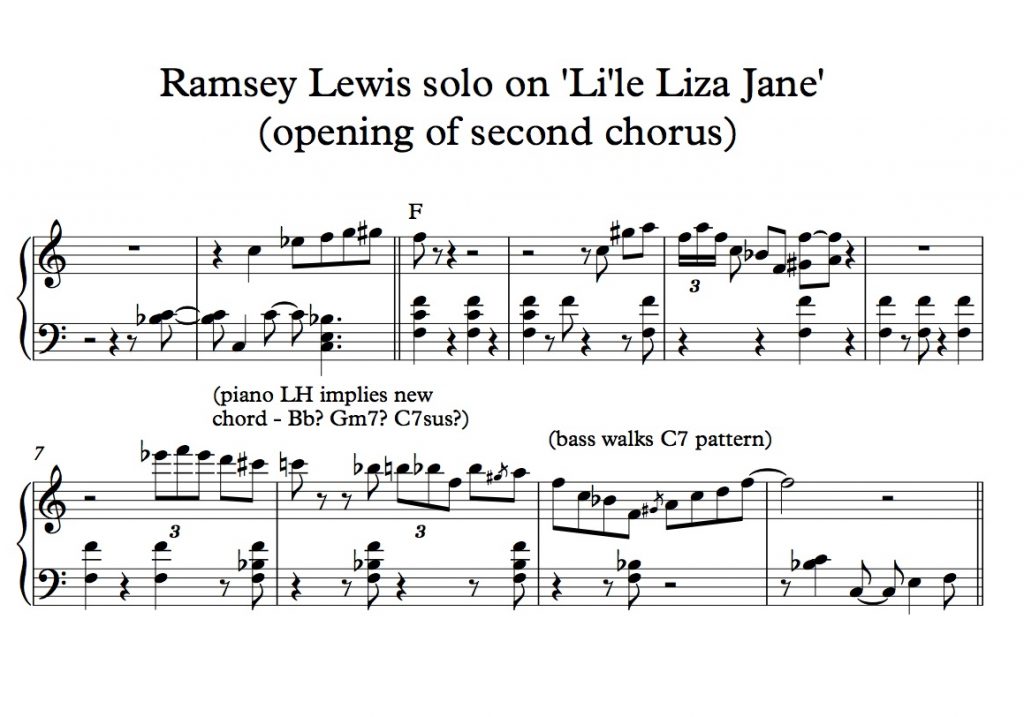‘Liza Jane’ is a North American folk tune that is a standard in the repertoire of New Orleans jazz. It has been performed by musicians from pianist Ramsey Lewis to trumpeter Wynton Marsalis. It is an example of the strong African influence in New Orleans music, as the B section of the tune (usually sung with the words ‘Oh Eliza, little Liza Jane’) is very similar to the African tune ‘Funga Alafia’ (also known as ‘Fanga Alafia’), which is typically described as originating from West Africa. The two tunes are even sung together in a recent choral arrangement. My piano arrangement of the tune is below, followed by some transcriptions of improvised solos on the tune from versions by the Preservation Hall Jazz Band and pianist Ramsey Lewis.
In the two downloadable PDFs below, an arrangement of the two melody strains is followed by a ‘scale outline’ which suggests improvising with a ‘left hand question, right hand answer’ approach and using two scales from the Ramsey Lewis solo below, the F ‘major blues’ scale and the F seventh scale. Please note that while learning the scale on the second page is part of the process of learning this piece of music, the scales are not meant to be played as written, just as the alphabet is not meant to be read as a sentence or a word (despite the best efforts of Big Bird.) The scales are a ‘toolbox’ for improvisation. An example of how to use the scales for improvising can be seen in my demonstration video of the tune, which also includes some explanation of how to play the melody on the first page. If you want to skip the explanation, I demonstrate the piece at 4:10 on the video.)


In most versions I’ve heard, including a recent one by The Preservation Hall Jazz Band, ‘Liza Jane’ is essentially a one-chord tune. In that version, tenor saxophonist Daniel Farrow takes a solo based entirely on the major scale (in my transcription here it is transposed from the recording’s key of E flat to F major, to match the other examples in this post):
The version by the Ramsey Lewis Trio skips the traditional A section of the tune and creates a 32 bar AABA form where the A is the traditional B section from ‘Liza Jane’ and the bridge is a progression moving from D minor back to F. In the first chorus of Lewis’ solo, the piano and bass both stay with the F7 chord throughout the A section; in the second chorus (which begins around 1:30), his left hand begins to vaguely imply a different chord in the fifth measure, and Eldee Young on bass reacts to the implication in m. 7-8. What is most interesting to me here is the way Lewis’ choice of notes cannot be interpreted as coming from a single scale. 